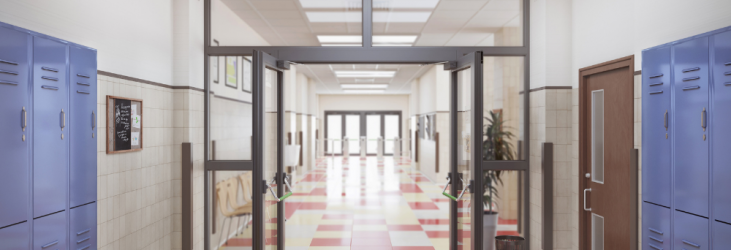
Back to School: The Perfect Storm?
Evan Winter
As the summer comes to a close, decisions surrounding the reopening of schools are simultaneously being made and hotly debated. The education system has been forced to weigh the risks of returning to in-classroom learning versus keeping children at home and taking the plunge further into remote practices. Many schools have chosen to reopen, but with precautions in place to suppress transmission of COVID-19, such as utilization of masks and social distancing. Looming on the horizon, flu season threatens to add fuel to the fire and push an already burdened healthcare system to the edge. While congregating school children, teachers, and administration are the center of conversation, the physicians tasked with treating those groups are placed in harm’s way as well.
Remote learning vs. the classroom
Life without the classroom has its fair share of drawbacks. Parents and teachers alike expressed growing concerns over at-home learning when schools closed last spring. Both groups noted the inability to keep students focused and a subsequent lack of learning taking place. Parents were faced with the challenge of monitoring their children while working from home themselves, and those who continued commuting to an office struggled with finding daycare. Despite problems at home, returning to the classroom also has negative side effects. Many officials worry that sending students and teachers back to school will cause a spike in COVID-19 cases and fuel a second wave of the pandemic. Regardless of who contracts COVID-19, the quickly approaching flu season may exacerbate the situation by providing even more illness to be treated. Flu season in the United States typically ramps up in October and peaks at some point between December and February. It is also possible for a person to have both COVID-19 and the flu simultaneously. Since the pandemic began at the end of last flu season, the effects of contracting both illnesses have yet to be extensively studied. The first wave of COVID-19 has already thrown lives into turmoil, not only through physical illness, but by causing emotional distress as sectors of the economy struggle, jobs are lost, and bills go unpaid. The existing stress compounded with another wave of the pandemic and flu season creates a perfect storm, sending an overwhelming number of patients into the healthcare system which has hardly had time to recover.
The effects until now
The pressure on physicians and other healthcare staff has been immense over the past six months, and many say they are not ready to tackle a second wave of COVID-19. Those on the front lines have been faced with long hours of treating often critically ill patients, and continued shortages of personal protective equipment (PPE) have left workers unable to adequately protect themselves. Primary care physicians have been hit even harder in some instances, with nearly half of practices being without PPE and over half reusing PPE. In a recent survey of practices conducted by Primary Care Collaborative and the Larry A. Green Center, in-person patient visits were shown to have dropped 46% since the pandemic began. Patients forgoing their regular appointments in an effort to quarantine has added financial stress to practices, and the income lost from such visits only increases the need to furlough or layoff staff. In a September, 2020 Medscape study, 62% of U.S. physicians reported their income had decreased since the pandemic set in, and 64% said their feelings of burnout were more intense.
Further stress
With the ever-growing public health concerns this fall is bringing, the nation’s physicians will end up taking the brunt of the impact. As many are just now attempting to recover from the first bout of COVID-19, the surge in illnesses caused as students return to school will cause more trouble for doctors. Physically, they will be working even more often and attending to a greater number of patients with less staff to back them up. If shortages of PPE continue, more staff members will become infected, decreasing the number available for work. Mentally, physicians are set to continually feel drained. Those with children of their own must manage sending them back to school, caring for them at home, and attending to patients without spreading infection. According to a 2014 AMA Insurance report, nearly 40% of physicians are married to other physicians or healthcare professionals. Those households in which both parents are physicians will face a greater degree of struggle in all the previously mentioned areas. Pay cuts, layoffs, and furloughs may continue to batter hospitals and other practices, placing additional financial stress on doctors. All these factors contribute heavily to physician burnout, a prominent issue even prior to the pandemic. While doctors are working endlessly to ensure the wellbeing of others, we must consider who is looking after them.
Physicians who have received pay cuts, been laid off or furloughed can reach out to Resolve for help in finding a new position or negotiating employment contracts. The job search and negotiation processes do not have to be difficult, and Resolve can help ease the stress caused by these uncertain times. Visit the job search or contract review pages for more information.
Johns Hopkins University is providing an ongoing analysis of precautions taken by each state when reopening schools. View the map here.